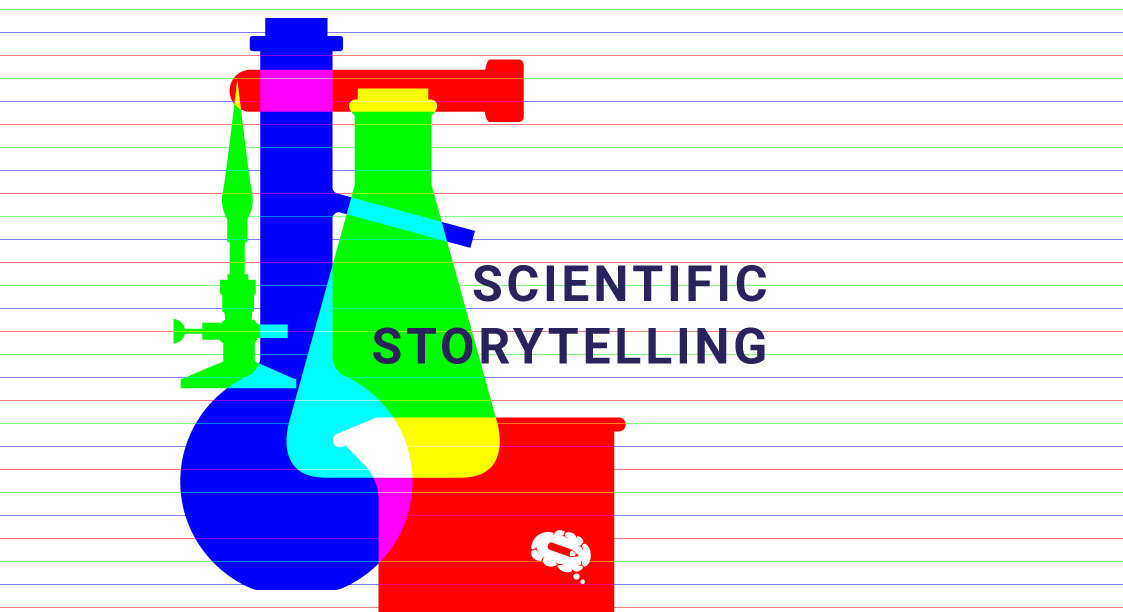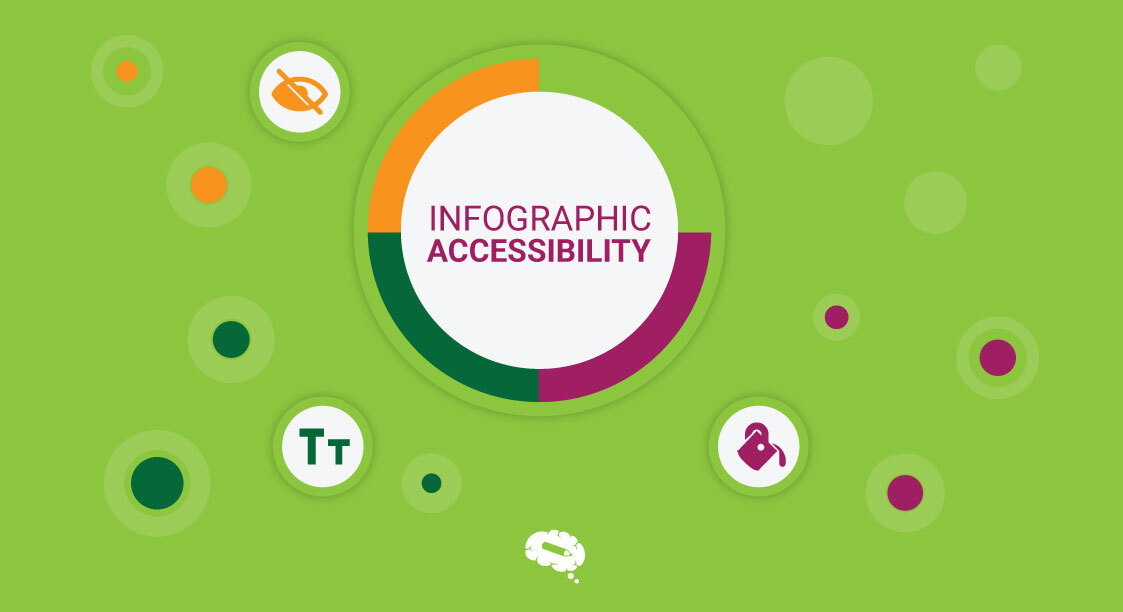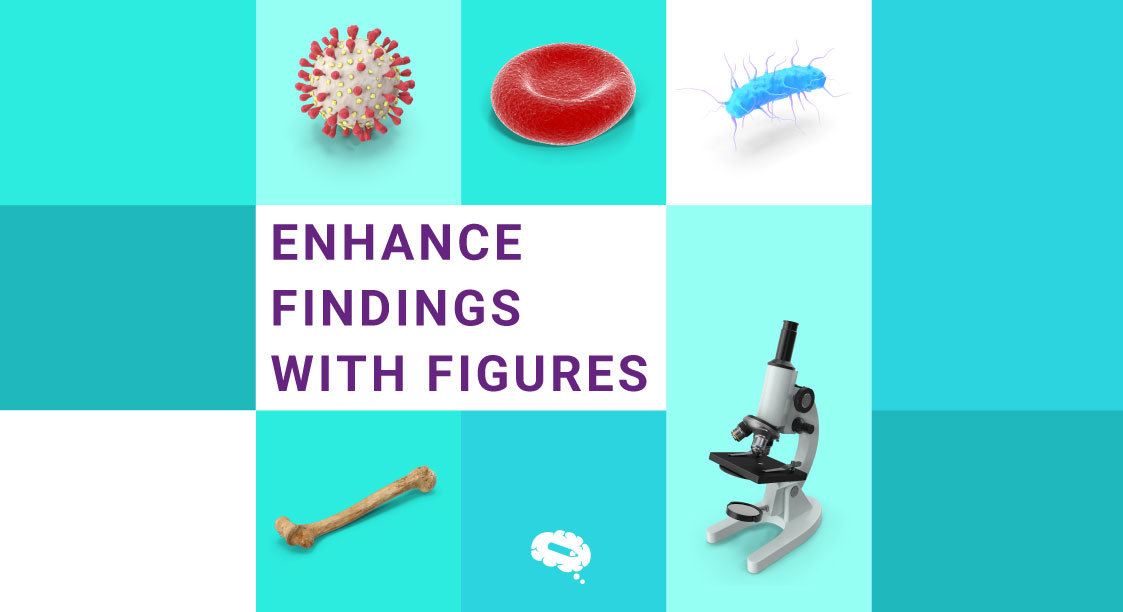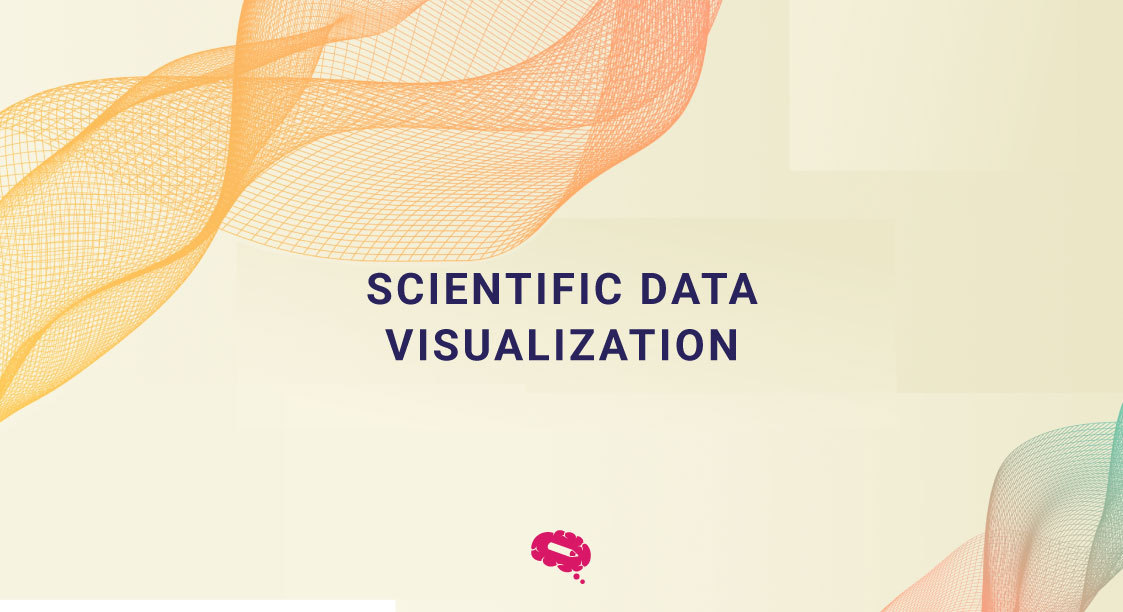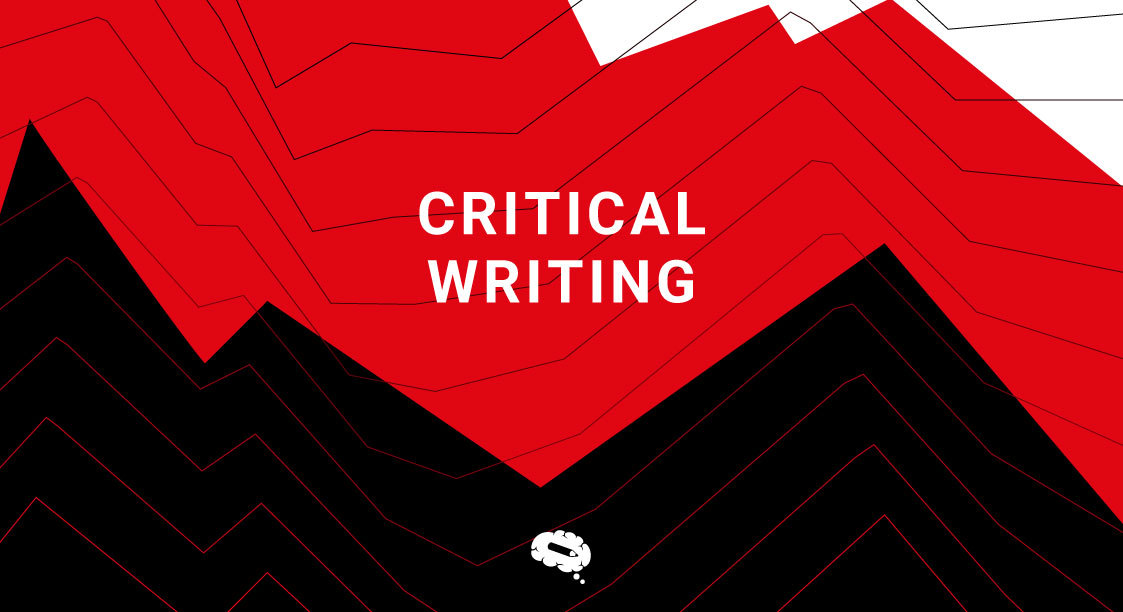The power of storytelling lies in its ability to convey complex ideas and engage diverse audiences. Often, science concepts can be intimidating and abstract, so storytelling helps bridge the gap between scientists and the general public. Scientists can enhance their research’s accessibility, relatability, and memorable qualities by weaving narratives around their findings.
In this blog, we’ll delve into the fascinating world of scientific storytelling. The art and science of effective storytelling in the realm of scientific discovery will be explored as we learn about the fundamental principles of crafting compelling narratives and explore how storytelling impacts science communication. Get ready to explore real-world examples, learn practical tips, and gain insights into the future of scientific communication through the lens of storytelling.
What Is Scientific Storytelling?
In scientific storytelling, complex concepts, discoveries, or theories are conveyed through narrative techniques. In this approach, scientific information is framed within an engaging story structure that enables diverse audiences to understand and engage with it.
The core of scientific storytelling is the combination of scientific inquiry and narrative construction. As a result, it fosters a deeper connection between science and society by bridging the specialized language of academia and everyday language of the general public.
Rewinding Through Time
The roots of scientific storytelling can be traced back thousands of years in human history. The pursuit of knowledge has always been intertwined with storytelling, from ancient mythologies that used allegorical tales to explain natural phenomena during the Renaissance, when thinkers like Galileo Galilei and Isaac Newton reshaped our understanding of the cosmos through their narratives of observation and experimentation.
With the advancement of technology and communication, science has become more accessible than ever before, increasing the importance of scientific storytelling. Across the science sphere, science communicators, journalists, educators, and researchers have embraced narrative as a powerful tool for engaging audiences, fostering curiosity, and inspiring action.
The Art Of Crafting A Scientific Narrative
Crafting a compelling narrative is essential to communicating complex ideas effectively to a diverse audience in scientific storytelling. Throughout this process, it is vital to maintain scientific accuracy while maintaining the ability to engage the reader or listener by utilizing the power of storytelling techniques to engage the reader or listener.
Identifying Key Elements
Understanding the key elements of a scientific narrative is crucial to laying out the structure of the details. You need a red thread that ties together the entire story to make it easier for readers to follow.
- Characters: Scientists, study subjects, or even scientific concepts themselves need characters in science stories. Making abstract concepts more relatable by introducing relatable characters is an effective way of humanizing the scientific process.
- Plot: Scientific narratives require a logical plot that guides the audience through the discovery process. It could involve describing how a hypothesis leads to experimentation and then conclusion, or tracing the history of scientific achievement.
- Conflict: Conflict propels the story forward and creates tension that engages the audience. Unanswered questions, contradictory evidence, and ethical dilemmas are all examples of conflict in science.
- Resolution: It is important for every story to have a satisfying conclusion, in which the key questions are answered and conflicts are resolved. Research may involve presenting findings from a study, proposing solutions to problems, or reflecting on broader implications.
Incorporating Data And Evidence Effectively
One of the key ways to engage the readers is by incorporating effectively the data that has been analyzed. It should be simple, yet catchy enough to catch the attention of the audience.
- Contextualization: Scientific storytelling is based on data and evidence, but presenting raw numbers and facts alone can overwhelm non-expert audiences. Data must be contextualized, explaining why it matters and how it contributes to the larger narrative.
- Visualization: Charts, graphs, and illustrations can help make complex data easier to understand and engage with. Incorporating visual elements into the narrative allows readers to grasp key concepts more quickly and reinforces the main points of the story. (Don’t worry, Mind the graph has your back!)
- Interpretation: Effective scientists interpret data rather than just present them, explaining how the data fit into a larger narrative and how they support or contradict current theories.
Engaging Your Audience And Balancing Accuracy
Among the most challenging aspects of scientific storytelling, this is one that must be addressed. Scientific accuracy and impact go hand in hand when telling stories.
- A careful choice of words is essential to ensure accuracy in scientific storytelling without sacrificing clarity or engagement. While conveying the necessary scientific concepts accurately, avoiding jargon and technical language wherever possible makes the narrative more accessible.
- The narrative arc also plays a significant role in balancing accuracy and engagement by maintaining the audience’s interest without sacrificing science integrity. It may involve creating suspense, including personal anecdotes, or placing the story in a broader social or cultural context.
- A scientific story needs to be transparent in order to maintain the audience’s trust. In order to build trust and foster an open dialogue with readers or listeners, it is important to disclose limitations, acknowledge uncertainties, and disclose any conflict of interest.
Scientific narratives are crafted by weaving the threads of data, evidence, and storytelling techniques together to engage, educate, and inspire audiences.
Impact Of Scientific Storytelling
Through scientific storytelling, we can bridge the gap between complex research and public understanding of science and society. There is no limit to the impact it has, reaching far beyond the confines of academia. The influence of scientific storytelling can be seen in a number of key ways:
Enhancing Communication With Diverse Audiences
In a compelling and accessible manner, scientific storytelling breaks down barriers to comprehension. It is possible for researchers to reach audiences with varying levels of scientific literacy by weaving narratives around scientific concepts. Whether it’s through articles, videos, podcasts, or social media posts, storytelling captivates attention and makes scientific content more relatable and engaging. Educators, students, policymakers, and the general public can benefit from this approach.
Fostering Public Engagement And Trust
People relate to science more when it is humanized through storytelling. Storytelling builds empathy and understanding with audiences by sharing scientists’ personal journeys, challenges, and triumphs. By cultivating this connection, scientific institutions and the scientific process themselves become more trustworthy. Scientific narratives that engage the public emotionally lead to the public becoming more involved with scientific concerns, participating in scientific discussions, and supporting evidence-based decision-making. Additionally, storytelling strengthens public trust in science by sharing transparently the uncertainties and limitations of scientific inquiry.
Inspiring Action And Change
Storytelling’s ability to elicit emotions and inspire action is one of its most powerful characteristics. Through storytelling, individuals and communities are motivated to act on pressing issues, such as climate change and public health crises, by highlighting the real-world impacts of scientific research. Through compelling narratives, scientists can advocate for policy changes, promote sustainable behaviors, and mobilize collective efforts towards positive societal outcomes. By framing scientific information within a narrative context, storytelling empowers people to see themselves as agents of change, capable of making a difference in the world.
Through the power of narrative, scientific storytelling transcends traditional modes of science communication to inform, inspire, and transform society’s relationship with science. In the 21st century, scientific storytelling will play an increasingly important role in shaping an informed, engaged, and scientifically literate society as we navigate complex challenges.
Advantages Of Scientific Storytelling
Using scientific storytelling as a communication tool, engagement tool, and advocacy tool, scientists can effectively share their research and inspire a more informed and engaged society. There are many advantages to scientific storytelling:
- Scientific storytelling facilitates understanding and engagement with complex data, concepts, and public policy.
- The ability to tell stories engages audiences, making scientific information more memorable and relatable. Science concepts are better understood and retained through this engagement.
- Through storytelling, scientists can humanize scientific research and counter misinformation and skepticism. Transparency and credibility are established through narratives.
- The power of stories to inspire action. In order to confront important scientific challenges, scientists can use storytelling to motivate individuals and communities.
- Through books, films, podcasts, and social media, scientific storytelling reaches a wider audience beyond academic circles. A culture of scientific literacy is fostered by this wider dissemination of knowledge.
- Interdisciplinary collaboration can be facilitated by storytelling by bridging communication gaps between scientists. Stories encourage collaboration and innovation by bringing broader context to research findings.
- Storytelling piques curiosity and fosters wonder, encouraging individuals to find out more about their surroundings. A lifelong interest in learning can be fostered by scientific storytelling that stimulates curiosity about science.
Challenges And Ethical Considerations
Although scientific storytelling is powerful, it is not without its challenges and ethical dilemmas. It is vital to address these concerns if the scientific community and the general public are to maintain credibility and trust. This will require careful thought and consideration, as well as clear communication of scientific findings and objectives. Additionally, it is important to ensure that scientific storytelling is ethical, responsible, and accurate.
Avoiding Misinformation And Exaggeration
A major concern in scientific storytelling is the possibility of inadvertently spreading misinformation or sensationalizing results. Maintaining accuracy and integrity should always be paramount, even if it means sacrificing a more dramatic narrative. Fact-checking and peer review processes are essential safeguards against the propagation of inaccuracies.
Addressing Controversies And Uncertainties
There are often uncertainties and controversies surrounding complex and evolving scientific issues. In order to tell ethical stories, it is essential to acknowledge uncertainty, represent different viewpoints fairly, and acknowledge uncertainty when it does exist. Trust and credibility can be lost by ignoring controversies or oversimplifying complex issues.
Maintaining Scientific Integrity
Integrity in science involves adhering to ethical standards, being transparent in research practices, and avoiding conflicts of interest. When telling a story, it’s important to portray the research process accurately, disclose any potential biases or conflicts, and clearly distinguish between established facts and hypotheses. Furthermore, it is critical to respect the boundaries of scientific evidence, avoiding overinterpreting or extrapolating beyond what is available.
To overcome these challenges, we need to maintain vigilance, apply critical thinking, and adhere to scientific principles. Considering these ethical issues thoughtfully can help scientists ensure that their storytelling efforts contribute to public understanding and trust in science.
Tips For Effective Scientific Storytelling
By incorporating these tips into your scientific storytelling, you can effectively engage and inspire your audience while presenting complex scientific concepts in an accessible and engaging way.
- Make sure you know who you’re communicating with and tailor your story to their level of understanding and interests.
- Make your analogies and metaphors relatable to your audience by translating complex scientific concepts into everyday terms.
- To make your scientific narrative memorable, appeal to emotions like curiosity, empathy, and wonder.
- You should strive for clarity in your storytelling and avoid oversimplifying science. Maintain scientific accuracy while simplifying complex ideas.
- Make your story come alive by using vivid imagery, examples, and anecdotes to illustrate your points. Enhance your audience’s experience by engaging their senses.
- Flow through your story from beginning to end with a clear narrative arc. Keep your audience engaged from start to finish by building suspense, introducing challenges, and providing solutions.
- Share your passion for science and your connection to the subject. Authenticity fosters trust and credibility, enhancing the impact and appeal of your story.
- You can improve your storytelling skills by practicing and iterating. Discover what works best for you and your audience by experimenting with different storytelling techniques, formats, and delivery methods.
- Use multimedia and interactive tools to enhance storytelling and appeal to diverse learning styles by incorporating images, videos, animations, and interactive elements.
- In storytelling, creativity and imagination are allowed, but scientific accuracy and integrity should always be prioritized. Your story should not exaggerate, distort, or cherry-pick data, and it should be transparent about uncertainties or limitations.
Case Studies: Successful Examples
A few examples of how and what science storytelling looks like can be seen below. These case studies highlight the diverse ways in which storytelling can enhance science communication across different mediums and platforms.
Storytelling in Science Journalism
- A Planet of Viruses by Carl Zimmer – Zimmer’s book teaches readers about viruses and tells intriguing stories about their impact on human history and biology.
- An exploration of the hidden world of microbes and their profound influence on the human body, Ed Yong’s “I Contain Multitudes” weaves personal history and scientific research together.
- With Buzz by Thor Hanson, we’re given a glimpse into that diversity, demonstrating how honeybees are just the tip of the iceberg when it comes to bee-plant relationships.
Science Communication through Visual Storytelling
- A powerful documentary of dolphin hunting and marine biology, “The Cove,” won an Oscar for its compelling narrative and scientific insights.
- With its visually stunning infographics, National Geographic conveys complex scientific concepts in a digestible format, engaging audiences of all ages.
Storytelling in Scientific Presentations and Talks
- In Neil deGrasse Tyson’s lectures, complex astrophysical concepts are brought to life through Tyson’s engaging storytelling style.
- A number of TED Talks feature scientists using storytelling techniques to convey their research and ideas, such as Jill Bolte Taylor’s “My Stroke of Insight” and David Eagleman’s “Can We Create New Senses for Humans?”
With the advancement of technology and platforms, we will be able to find new innovative ways to engage audiences as the landscape of scientific storytelling continues to evolve. As long as we stay true to the principles of accuracy, integrity, and empathy, we will be able to harness the full potential of storytelling to shape a future where science is not just understood by all people, but is also embraced and respected by them.
Discover The Power Of Scientific Storytelling With A Free Infographic Maker
Scientific storytelling is poised to make academic research and dissertations more accessible and impactful than ever. The use of tools such as Mind the Graph allows researchers to transform complex data into engaging narratives by seamlessly incorporating visuals into their drafts. An infographic that effectively communicates scientific concepts can be created with Mind the Graph using a suite of powerful tools. By making research findings more understandable and memorable, this powerful visualization tool not only improves clarity but also increases citations. Visit our website for more information.

Subscribe to our newsletter
Exclusive high quality content about effective visual
communication in science.

